ART NEWS:March 03
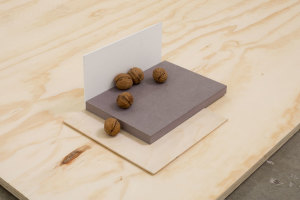 Julius Heinemann’s solo exhibition title “Dinge und Undinge (o las formas de las cosas)” incorporates both, German and Spanish speech thus becoming partly a visual element for those who don’t speak both languages, suggests this thin line between the concrete and the abstract, the identifiable and inconceivable: both existing inseparably. In this exhibition Heinemann proposes an immersive setting, consisting of paintings, objects, spatial interventions and loose, seemingly accidental shapes as a commentary towards the act of seeing as well as the act of the production of an image, while considering the former. How do we absorb light, how do we focus an object, how do the surrounding elements as well as our past and our present integrate into the imagery? And what do we actually see in physical terms? Is this shade part of the painting or an actual shadow falling onto the canvas? And is there a real difference if the perceived result is the same? Info: PROYECTOSMONCLOVA, Colima 55, Roma Norte, Cuauhtémoc, Mexico City, Duration: 21/3-27/4/19, Tue-Fri 10:00-18:00, Sat 11:00-16:00, http://proyectosmonclova.com
Julius Heinemann’s solo exhibition title “Dinge und Undinge (o las formas de las cosas)” incorporates both, German and Spanish speech thus becoming partly a visual element for those who don’t speak both languages, suggests this thin line between the concrete and the abstract, the identifiable and inconceivable: both existing inseparably. In this exhibition Heinemann proposes an immersive setting, consisting of paintings, objects, spatial interventions and loose, seemingly accidental shapes as a commentary towards the act of seeing as well as the act of the production of an image, while considering the former. How do we absorb light, how do we focus an object, how do the surrounding elements as well as our past and our present integrate into the imagery? And what do we actually see in physical terms? Is this shade part of the painting or an actual shadow falling onto the canvas? And is there a real difference if the perceived result is the same? Info: PROYECTOSMONCLOVA, Colima 55, Roma Norte, Cuauhtémoc, Mexico City, Duration: 21/3-27/4/19, Tue-Fri 10:00-18:00, Sat 11:00-16:00, http://proyectosmonclova.com
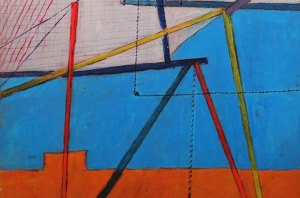 The paintings in James Juthstrom solo exhibition “Insight. Paintings from 1965-1998” explore the artist’s inner dialogue in viewing the interior and exterior of his loft on Broome Street, where he lived for over forty years. The work includes cryptic visuals of Juthstrom’s living space with floorboards, skylights, shadowy figures and geometric angles. From the inner to the outer, a series of abstract work focuses on SoHo’s urban view of smokestacks, windows, rooftops, angled bars and ladders. A highlight in the exhibition is a four panel painting, which maps a convergence of fire escape ladders with colorful bars and an obscure red canister and container on a ledge, leads to a mysterious message of order in disorder. After moving into his studio, Juthstrom moved away from his early representational landscapes to capturing the breadth of the city. Throughout the late 1960s and early 1970s, his paintings began to reflect an abstracted skyline of SoHo, reducing the buildings outside of his loft to fields of color. Working in oil on board, Juthstrom formed rich cityscapes, drawing inspiration from the same movement as Richard Diebenkorn for his abstract Ocean Park paintings. During these years, he also became fascinated with astronomy, celestial bodies and earth plate tectonics. Info: Curator: James Cavello, Westwood Gallery NYC, 262 Bowery, New York, Duration: 26/3-18/5/19, Days & Hours: Tue-Sat 10:00-18:00, www.westwoodgallery.com
The paintings in James Juthstrom solo exhibition “Insight. Paintings from 1965-1998” explore the artist’s inner dialogue in viewing the interior and exterior of his loft on Broome Street, where he lived for over forty years. The work includes cryptic visuals of Juthstrom’s living space with floorboards, skylights, shadowy figures and geometric angles. From the inner to the outer, a series of abstract work focuses on SoHo’s urban view of smokestacks, windows, rooftops, angled bars and ladders. A highlight in the exhibition is a four panel painting, which maps a convergence of fire escape ladders with colorful bars and an obscure red canister and container on a ledge, leads to a mysterious message of order in disorder. After moving into his studio, Juthstrom moved away from his early representational landscapes to capturing the breadth of the city. Throughout the late 1960s and early 1970s, his paintings began to reflect an abstracted skyline of SoHo, reducing the buildings outside of his loft to fields of color. Working in oil on board, Juthstrom formed rich cityscapes, drawing inspiration from the same movement as Richard Diebenkorn for his abstract Ocean Park paintings. During these years, he also became fascinated with astronomy, celestial bodies and earth plate tectonics. Info: Curator: James Cavello, Westwood Gallery NYC, 262 Bowery, New York, Duration: 26/3-18/5/19, Days & Hours: Tue-Sat 10:00-18:00, www.westwoodgallery.com
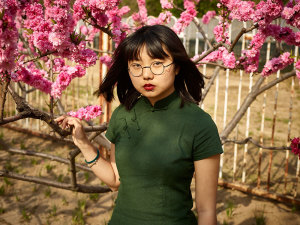 Pieter Hugo débuts works from the series “Flat Noodle Soup Talk” (2015-16), in his first solo exhibition in Hong Kong “Africa to China”. This works were shot in Beijing, taken over two brief artist-in-residence stays. Eschewing the touristic, he chose instead to record Beijingers in fleeting moments of ordinary intimacy. He reached out to friends of interpreters and hotel employees, inviting them to be portrait-subjects. Choosing average, mainly young people living and working in Beijing, Pieter’s image framing and lighting is oddly reminiscent of classic poses from Dutch old Master portrait paintings. These are strong characters unintimidated by the camera’s lens. There are nudes shot at home, families on sofas, up-close street portraits, smokers, tattoos, blue hair, piercings, strong girls and funny fashions. In short, Peter doesn’t aspire (on his first trips to China) to capture anything more emblematic of China than its ordinary Beijingers, just being – however oddly – themselves. Info: Pékin Fine Arts, Union Industrial Building, 48 Wong Chuk Hang Road, 16 /F Aberdeen, Hong Kong, Duration: 26/3-29/5/19, Days & Hours: Tue-Fri 10:00-18:00, Sat 11:00-18:00, www.pekinfinearts.com
Pieter Hugo débuts works from the series “Flat Noodle Soup Talk” (2015-16), in his first solo exhibition in Hong Kong “Africa to China”. This works were shot in Beijing, taken over two brief artist-in-residence stays. Eschewing the touristic, he chose instead to record Beijingers in fleeting moments of ordinary intimacy. He reached out to friends of interpreters and hotel employees, inviting them to be portrait-subjects. Choosing average, mainly young people living and working in Beijing, Pieter’s image framing and lighting is oddly reminiscent of classic poses from Dutch old Master portrait paintings. These are strong characters unintimidated by the camera’s lens. There are nudes shot at home, families on sofas, up-close street portraits, smokers, tattoos, blue hair, piercings, strong girls and funny fashions. In short, Peter doesn’t aspire (on his first trips to China) to capture anything more emblematic of China than its ordinary Beijingers, just being – however oddly – themselves. Info: Pékin Fine Arts, Union Industrial Building, 48 Wong Chuk Hang Road, 16 /F Aberdeen, Hong Kong, Duration: 26/3-29/5/19, Days & Hours: Tue-Fri 10:00-18:00, Sat 11:00-18:00, www.pekinfinearts.com
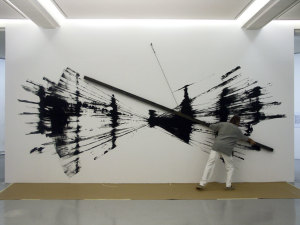 The exhibition “IN RELATION: PERFORMANCE / SCULPTURE / PAINTING” continues Bernar Venet’s exploration of the dynamics between line and material, form and force, the rational and the organic. Venet created site-specific works that capture all three titled mediums on the walls of the gallery. The artist’s unique process utilises an installed metal bar covered in paint, the visual image is realised by the artists’ gesture and movements as well as the particular attributes of the material, the angle of the bar and the fluidity of the paint. Venet’s artistic career rose to prominence in the 1960s after he moved to New York and began experimenting with the tenets of Minimalism, he is best known for his experimental approach to media and his strong emphasis on process over outcome. Venet’s work is highly innovative, often based on mathematical models, and using industrial materials such as coal, metal, layers of tar on cardboard and large-scale steel installations. Info: de Sarthe, 20/F, Global Trade Square, No. 21 Wong Chuk Hang Road, Hong Kong, Duration: 27/3-18/5/19, Days & Hours: Tue-Sat 11:00-19:00, www.desarthe.com
The exhibition “IN RELATION: PERFORMANCE / SCULPTURE / PAINTING” continues Bernar Venet’s exploration of the dynamics between line and material, form and force, the rational and the organic. Venet created site-specific works that capture all three titled mediums on the walls of the gallery. The artist’s unique process utilises an installed metal bar covered in paint, the visual image is realised by the artists’ gesture and movements as well as the particular attributes of the material, the angle of the bar and the fluidity of the paint. Venet’s artistic career rose to prominence in the 1960s after he moved to New York and began experimenting with the tenets of Minimalism, he is best known for his experimental approach to media and his strong emphasis on process over outcome. Venet’s work is highly innovative, often based on mathematical models, and using industrial materials such as coal, metal, layers of tar on cardboard and large-scale steel installations. Info: de Sarthe, 20/F, Global Trade Square, No. 21 Wong Chuk Hang Road, Hong Kong, Duration: 27/3-18/5/19, Days & Hours: Tue-Sat 11:00-19:00, www.desarthe.com
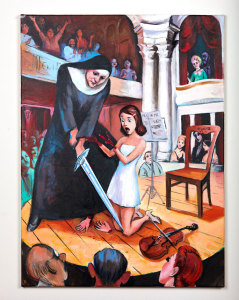 The exhibition “The Witching Hour” marks the first solo presentation of Stu Mead’s work in New York. Long celebrated as a radical figure within the confines of the underground art world, Stu Mead’s art is located more specifically within the perilous terrain of erotic painting. A constant composer of masturbatory imaginings, Mead’s work is an unfettered vision of male desire, in which women are both venerated and unabashedly sexualized. It is a depiction of sex unmarked by the laws of decorum, a portrait of reality that accepts and embraces humanity’s proclivity for perversion. Like Robert Mapplethorpe, Mead has never flinched at the libidinal power of taboos. While sex and painting have long gone hand in hand – the scopophilic tradition of art having been well cemented from Classical Antiquity onwards – anti-Freudian forms of feminism, which have rejected the realities of the differences between the sexes, mean that art such as Mead’s must be tucked away, shoved under the bed of an art world which feigns liberalism but shirks any true transgression of boundaries. Info: Curator: Ariella Wolens, Fortnight Institute, 60 East 4th Street, New York, Duration: 29/3-26/4/19, Days & Hours: Wed 11:00-17:00, Thu-Sun 13:00-19:00, https://fortnight.institute
The exhibition “The Witching Hour” marks the first solo presentation of Stu Mead’s work in New York. Long celebrated as a radical figure within the confines of the underground art world, Stu Mead’s art is located more specifically within the perilous terrain of erotic painting. A constant composer of masturbatory imaginings, Mead’s work is an unfettered vision of male desire, in which women are both venerated and unabashedly sexualized. It is a depiction of sex unmarked by the laws of decorum, a portrait of reality that accepts and embraces humanity’s proclivity for perversion. Like Robert Mapplethorpe, Mead has never flinched at the libidinal power of taboos. While sex and painting have long gone hand in hand – the scopophilic tradition of art having been well cemented from Classical Antiquity onwards – anti-Freudian forms of feminism, which have rejected the realities of the differences between the sexes, mean that art such as Mead’s must be tucked away, shoved under the bed of an art world which feigns liberalism but shirks any true transgression of boundaries. Info: Curator: Ariella Wolens, Fortnight Institute, 60 East 4th Street, New York, Duration: 29/3-26/4/19, Days & Hours: Wed 11:00-17:00, Thu-Sun 13:00-19:00, https://fortnight.institute
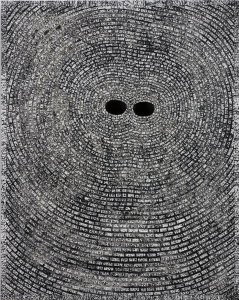 Jack Whitten’s first solo show by the artist in a European institution, “Jack’s Jacks”, shows how Whitten, over a period of more than five decades, continually extended the boundaries of abstract painting. Beginning with early gestural paintings that were strongly influenced by Abstract Expressionism, the exhibition traces Whitten’s development as a painter through to his later experiments with structure and materiality that resulted in a unique tesserae style. The exhibition pays particular attention to paintings dedicated to historical events and prominent people. The presentation brings together 30 major works from European and American collections, which Whitten considered “gifts” for those acknowledged in the titles. The dazzling colors of Whitten’s fragmented paintings are reminiscent of the improvised solos and rhythms of jazz and reveal the art ist’s unmistakable love for this style of music. Several paintings were created in memory of the greats of jazz, such as Duke Ellington, John Coltrane and Bud Powell. But other musicians like Prince and B.B. King are also encountered in the exhibition. Info: Hamburger Bahnhof–Museum für Gegenwart-Berlin, Invalidenstraße 50-51, Berlin, Duration: 29/3-1/9/19, Days & Hours: Tue-Wed & Fri 10:00-18:00, Thu 10:00-20:00, Sat-Sun 11:00-18:00, www.smb.museum
Jack Whitten’s first solo show by the artist in a European institution, “Jack’s Jacks”, shows how Whitten, over a period of more than five decades, continually extended the boundaries of abstract painting. Beginning with early gestural paintings that were strongly influenced by Abstract Expressionism, the exhibition traces Whitten’s development as a painter through to his later experiments with structure and materiality that resulted in a unique tesserae style. The exhibition pays particular attention to paintings dedicated to historical events and prominent people. The presentation brings together 30 major works from European and American collections, which Whitten considered “gifts” for those acknowledged in the titles. The dazzling colors of Whitten’s fragmented paintings are reminiscent of the improvised solos and rhythms of jazz and reveal the art ist’s unmistakable love for this style of music. Several paintings were created in memory of the greats of jazz, such as Duke Ellington, John Coltrane and Bud Powell. But other musicians like Prince and B.B. King are also encountered in the exhibition. Info: Hamburger Bahnhof–Museum für Gegenwart-Berlin, Invalidenstraße 50-51, Berlin, Duration: 29/3-1/9/19, Days & Hours: Tue-Wed & Fri 10:00-18:00, Thu 10:00-20:00, Sat-Sun 11:00-18:00, www.smb.museum
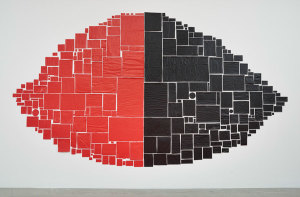 Inspired by the community of collaboratively built structures in his hometown of Ajusco, which Abraham Cruzvillegas has described as a “sprawling slum” on a landscape of volcanic rock south of Mexico City, Cruzvillegas’s practice engages deeply with local culture and geography. While his work takes many forms, including sculpture, installation, film, music, writing, and performance, the core of Abraham Cruzvillegas’s current creative investigation centers around transforming recycled materials into sculptural objects, then engaging local participants as agents of change and social dialogue. The artist extends this process to museums and institutions that are exhibiting his work by instructing staff to source discarded and found materials in order to make the sculptures themselves. In this way, he acts as a director and catalyst, rather than the singular author of the artworks. For the exhibition, “Hi, how are you, Gonzo?” Cruzvillegas provided the museum with schematics to produce his sculptures, allowing for site-specific variations in scale and material. Info: Curators: Heather Pesantim and Heidi Zuckerman, The Contemporary Austin, Jones Center, 700 Congress Avenue, Austin, Duration: 30/3-14/7/19, Days & Hours: Tue-Sat 11:00-19:00, Sun 12:00-17:00, www.thecontemporaryaustin.org
Inspired by the community of collaboratively built structures in his hometown of Ajusco, which Abraham Cruzvillegas has described as a “sprawling slum” on a landscape of volcanic rock south of Mexico City, Cruzvillegas’s practice engages deeply with local culture and geography. While his work takes many forms, including sculpture, installation, film, music, writing, and performance, the core of Abraham Cruzvillegas’s current creative investigation centers around transforming recycled materials into sculptural objects, then engaging local participants as agents of change and social dialogue. The artist extends this process to museums and institutions that are exhibiting his work by instructing staff to source discarded and found materials in order to make the sculptures themselves. In this way, he acts as a director and catalyst, rather than the singular author of the artworks. For the exhibition, “Hi, how are you, Gonzo?” Cruzvillegas provided the museum with schematics to produce his sculptures, allowing for site-specific variations in scale and material. Info: Curators: Heather Pesantim and Heidi Zuckerman, The Contemporary Austin, Jones Center, 700 Congress Avenue, Austin, Duration: 30/3-14/7/19, Days & Hours: Tue-Sat 11:00-19:00, Sun 12:00-17:00, www.thecontemporaryaustin.org
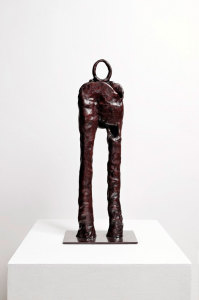 The first solo museum exhibition in the U.S.A. of the work of Simone Fattal brings together a selection of over 100 works created over the last 40 years, featuring abstract and figurative ceramic sculptures, paintings, and collages that draw from a range of sources including war narratives, landscape painting, ancient history, mythology, and Sufi poetry. The exhibition explores the impact of displacement, as well as the politics of archeology and excavation, as these themes resonate across Fattal’s multifaceted artistic practice. Simone Fattal was born in Damascus, Syria and raised in Lebanon, where she studied philosophy at the École des Lettres in Beirut. She then moved to Paris where she continued her philosophical pursuits at the Sorbonne. In 1969, she returned to Beirut and began working as a visual artist, exhibiting her paintings locally until the start of the Lebanese Civil War. She fled Lebanon in 1980 and settled in California, where she founded the Post-Apollo Press, a publishing house dedicated to innovative and experimental literary work. In 1988, she enrolled in a course at the Art Institute of San Francisco, which prompted a return to her artistic practice and a newfound dedication to sculpture and ceramics. Info: Curator: Ruba Katrib, MoMA PS1, 22-25 Jackson Avenue, Long Island City, New York, Duration: 31/3-2/9/19, Days & Hours: Thu-Mon 12:00-18:00, www.moma.org
The first solo museum exhibition in the U.S.A. of the work of Simone Fattal brings together a selection of over 100 works created over the last 40 years, featuring abstract and figurative ceramic sculptures, paintings, and collages that draw from a range of sources including war narratives, landscape painting, ancient history, mythology, and Sufi poetry. The exhibition explores the impact of displacement, as well as the politics of archeology and excavation, as these themes resonate across Fattal’s multifaceted artistic practice. Simone Fattal was born in Damascus, Syria and raised in Lebanon, where she studied philosophy at the École des Lettres in Beirut. She then moved to Paris where she continued her philosophical pursuits at the Sorbonne. In 1969, she returned to Beirut and began working as a visual artist, exhibiting her paintings locally until the start of the Lebanese Civil War. She fled Lebanon in 1980 and settled in California, where she founded the Post-Apollo Press, a publishing house dedicated to innovative and experimental literary work. In 1988, she enrolled in a course at the Art Institute of San Francisco, which prompted a return to her artistic practice and a newfound dedication to sculpture and ceramics. Info: Curator: Ruba Katrib, MoMA PS1, 22-25 Jackson Avenue, Long Island City, New York, Duration: 31/3-2/9/19, Days & Hours: Thu-Mon 12:00-18:00, www.moma.org
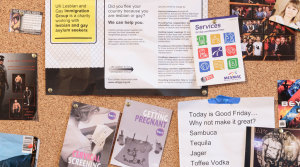 The exhibition “Queer Spaces: London, 1980-Today” casts a celebratory and defiant eye over the history of London’s queer spaces. Combining rarely-seen archival material with original work by artists concerned with the vibrancy and importance of LGBTQ+ cultural life, this exhibition considers how market-led redevelopment of spaces around London is rapidly transforming the capital’s queer scenes. In the decade between 2006 and 2016, more than half of venues for the LGBTQ+ community in London have closed, falling from 125 to 53. In 2017/2018 this figure stabilised, but what has been the effect of these changes on the lives of queer people? Featuring rarely-displayed archival material from pivotal LGBTQ+ venues, the exhibition shares findings from a London-wide study carried out by UCL’s Urban Laboratory. It brings to the fore a selection of case study of individual spaces, each with unique stories. Info: Whitechapel Gallery, 77-82 Whitechapel High Street, London, Duration: 2/4-25/8/19, Days & Hours: Tue-Wed 11:00-18:00, Thu-Fri 11:00-21:00, Sat-Sun 11:00-18:00, www.whitechapelgallery.org
The exhibition “Queer Spaces: London, 1980-Today” casts a celebratory and defiant eye over the history of London’s queer spaces. Combining rarely-seen archival material with original work by artists concerned with the vibrancy and importance of LGBTQ+ cultural life, this exhibition considers how market-led redevelopment of spaces around London is rapidly transforming the capital’s queer scenes. In the decade between 2006 and 2016, more than half of venues for the LGBTQ+ community in London have closed, falling from 125 to 53. In 2017/2018 this figure stabilised, but what has been the effect of these changes on the lives of queer people? Featuring rarely-displayed archival material from pivotal LGBTQ+ venues, the exhibition shares findings from a London-wide study carried out by UCL’s Urban Laboratory. It brings to the fore a selection of case study of individual spaces, each with unique stories. Info: Whitechapel Gallery, 77-82 Whitechapel High Street, London, Duration: 2/4-25/8/19, Days & Hours: Tue-Wed 11:00-18:00, Thu-Fri 11:00-21:00, Sat-Sun 11:00-18:00, www.whitechapelgallery.org
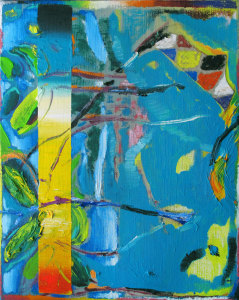 In the exhibition “La recherche du rayon vert”, Allan Villavicencio assembles a new series of works, in a configuration especially designed for the gallery space and in affinity with this optical manifestation. Taking inspiration from the spatial experimentation characteristic of Mexican muralism, from the sensations of navigation in 3D virtual landscapes, and from the energy of the urban environment, this exhibition is conceived of as a total landscape. It brings together three corpuses : a mural painting, encaustic paintings, and what Allan Villavicencio calls volume “projections” of paintings. The constant shifts between these different ensembles — between the narrative figuration of a deconstructed tropicality and the distance of abstract motifs — encourage layered readings and the ambiguity of relations. The mural section sketches a space in motion in which the notion of centre is evacuated, as is the possibility of omnisciently embracing the ensemble. The encaustic paintings, for their part, return to an ancient technique to depict fragments of visions. The volume projections constitute an array of ersatz and residues of the landscape in the space. Info: Maëlle Galerie, 1-3 rue Ramponeau, Paris, Duration : 4/4-25/8/19, Days & Hours: Wed-Sat 14:00-19:00, www.maellegalerie.com
In the exhibition “La recherche du rayon vert”, Allan Villavicencio assembles a new series of works, in a configuration especially designed for the gallery space and in affinity with this optical manifestation. Taking inspiration from the spatial experimentation characteristic of Mexican muralism, from the sensations of navigation in 3D virtual landscapes, and from the energy of the urban environment, this exhibition is conceived of as a total landscape. It brings together three corpuses : a mural painting, encaustic paintings, and what Allan Villavicencio calls volume “projections” of paintings. The constant shifts between these different ensembles — between the narrative figuration of a deconstructed tropicality and the distance of abstract motifs — encourage layered readings and the ambiguity of relations. The mural section sketches a space in motion in which the notion of centre is evacuated, as is the possibility of omnisciently embracing the ensemble. The encaustic paintings, for their part, return to an ancient technique to depict fragments of visions. The volume projections constitute an array of ersatz and residues of the landscape in the space. Info: Maëlle Galerie, 1-3 rue Ramponeau, Paris, Duration : 4/4-25/8/19, Days & Hours: Wed-Sat 14:00-19:00, www.maellegalerie.com
